Customer-led marketing used to be something that only big companies could even claim to do. It required a whole department focused on developing relationships with customers that could lead to polished videos, case studies, and sales references.
But prospective buyers now demand much more in the way of credible social proof before they can buy, and customer-led marketing has become attainable just in time. When you opt for a customer-led strategy, much of the content you share is generated by people who have first-hand experience with your product or service. In this guide, we’ll show you how to leverage these people and their stories in your marketing strategy, whether you’re a solopreneur or in the Fortune 50.
We’ll address…
Throughout the post, we’ll also showcase examples of real customer-led marketing campaigns based on testimonials and customer insights, so you can gain some inspiration for your strategy.
Benefits of Customer-Led Marketing
Businesses often opt for a customer-led marketing approach to help their offering stand out from the crowd. When so many channels are saturated with targeted ads and influencer partnerships, shifting the focus of your customer-facing marketing materials can build trust and brand awareness with a wider target audience.
There are plenty of reasons why customer-led marketing (CLM) brings your product down to earth and connects with potential customers. For example…
- CLM taps into the “wisdom of friends” concept. According to this marketing principle, potential customers are drawn to social proof from people they trust during their decision-making process. Customer-led campaigns feature their peers at multiple touchpoints, reassuring them that they’ll be in good company if they opt to work with your business.
- CLM speaks your customers’ language. Traditional product marketing materials can feel samey or disingenuous, with multiple companies using identical buzzwords. But when you focus on customer satisfaction as one of your KPIs and publicize it in your marketing, you put your offering in real and relatable terms.
- CLM shows how much you value your customers. By telling your customers’ stories, you show you empathize with their pain points and value their input. When you do this authentically, you differentiate your company from your competitors and foster customer loyalty.
- CLM increases engagement. When your marketing initiatives show existing customers that their opinions matter, they’re more likely to remember your company and work with you again in the future. Remember, customer retention is far more efficient than customer acquisition, so this is a benefit companies can’t afford to overlook.
- CLM reduces marketing costs. Most of the materials published in a CLM campaign are forms of user-generated content—like customer reviews and testimonials describing someone’s experience of your company. Because you’re outsourcing your content to your users (rather than a production team, for example) you save time and money.
- CLM informs strategic planning. When you collect content for customer-led growth and marketing campaigns, you’ll also build a library of customer references, which can inform your business development decisions, drive revenue growth, and help keep your product relevant over time.
Find out more about the benefits of testimonials and UGC: 4 Testimonial Statistics That Show the Power of Social Proof.
7 Types of Customer-Led Marketing
Depending on your product, industry, and relationship with customers or clients, you can use several different types of user-generated content (UGC) in your marketing.
We’ve tracked down these examples from across industries to show these strategies in action.
1. Cathedral Payments: Customer Reviews and Statistics from Trusted Sites
If you have a profile on a third-party review site, you’ve probably picked up some great evaluations from your users. This form of UGC can be an excellent addition to your marketing strategy because potential customers know these sites and trust their reviews to build an accurate, independent picture of your company.
For example, Cathedral Payments, a tech-driven payment solutions platform, use their Trustpilot ratings at various points on their website. You can see the 5-star rating in action on their testimonial page.
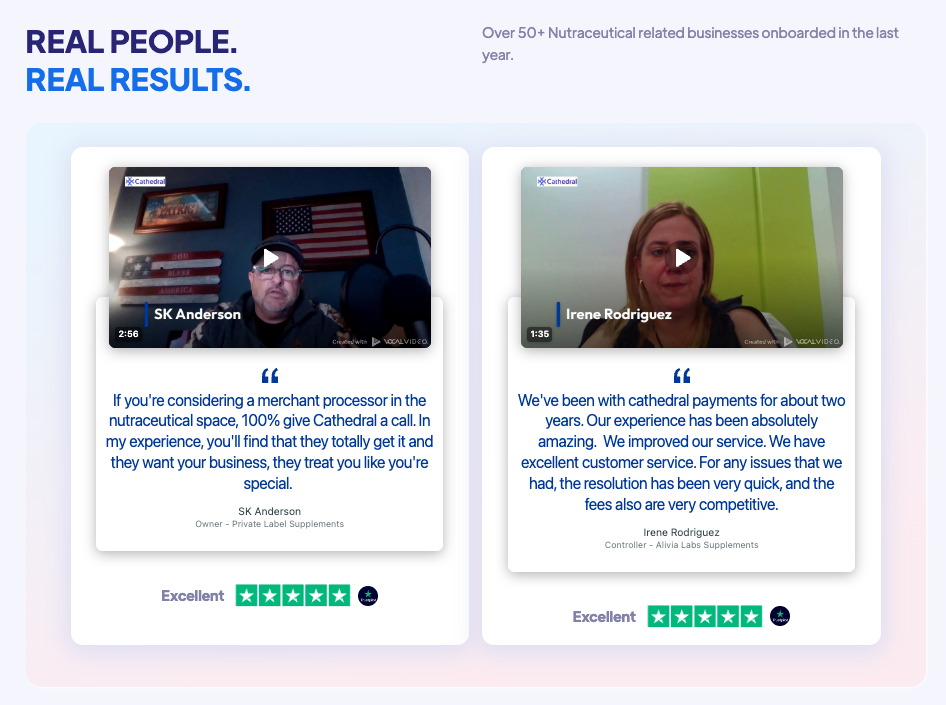
More and more people rely on social media for recommendations, referrals, and a real-time overview of the products grabbing the attention of their peers. This is the main reason that UGC marketing has thrived in recent years.
Knowadays, an online learning platform for would-be proofreaders, regularly publish UGC in the form of graduate reviews on their Facebook page. These customer insights cover many of the questions a participant might have before signing up for the course.
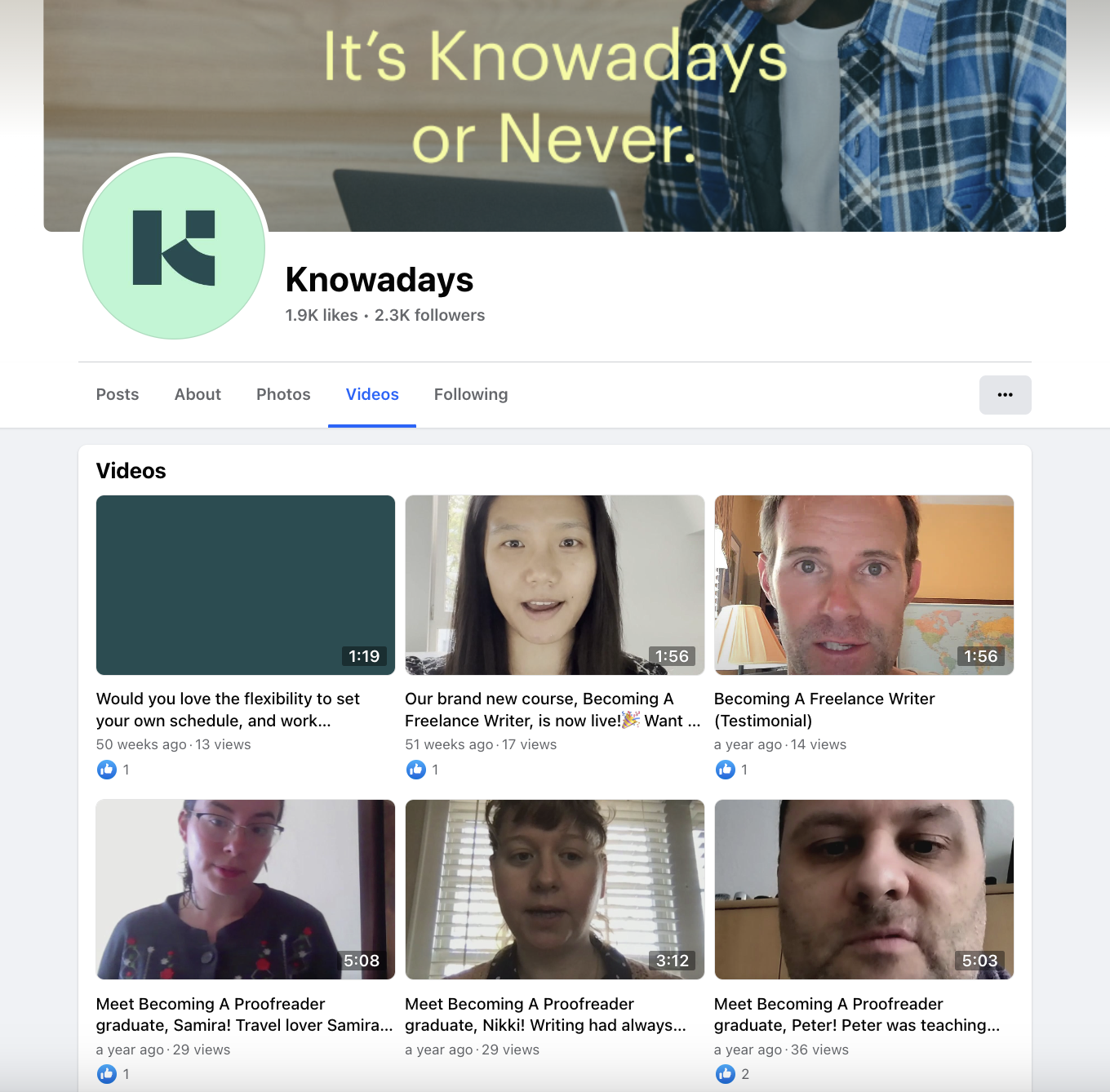
Prioritizing UGC on social media is also a fantastic strategy because it highlights the thriving community you’ve built around your business. This content implicitly invites other people to join in and share their own stories, which has the added benefit of putting your brand in front of their followers to increase your audience.
Note: With Vocal Video, it’s easy to ask for testimonials like these in your follow-up communications with your customers. We’ll cover this in more detail later.
3. Makja: Multi-Purpose Customer Testimonials in Product Marketing
In contrast to star ratings and raw statistics, testimonials express customer success through storytelling. This is a memorable way to highlight the value your company can offer.
The nutritional snack and supplement company Majka uses written customer reviews and video testimonials throughout their ecommerce site. They also invite customers to participate in their “Breakfast Challenge” and share their experience on social media.
This is a particularly effective strategy for boosting customer engagement. Many of Majka’s products are aimed at new moms, who might be especially reassured by the sense of community and authenticity this customer-centric strategy has built.
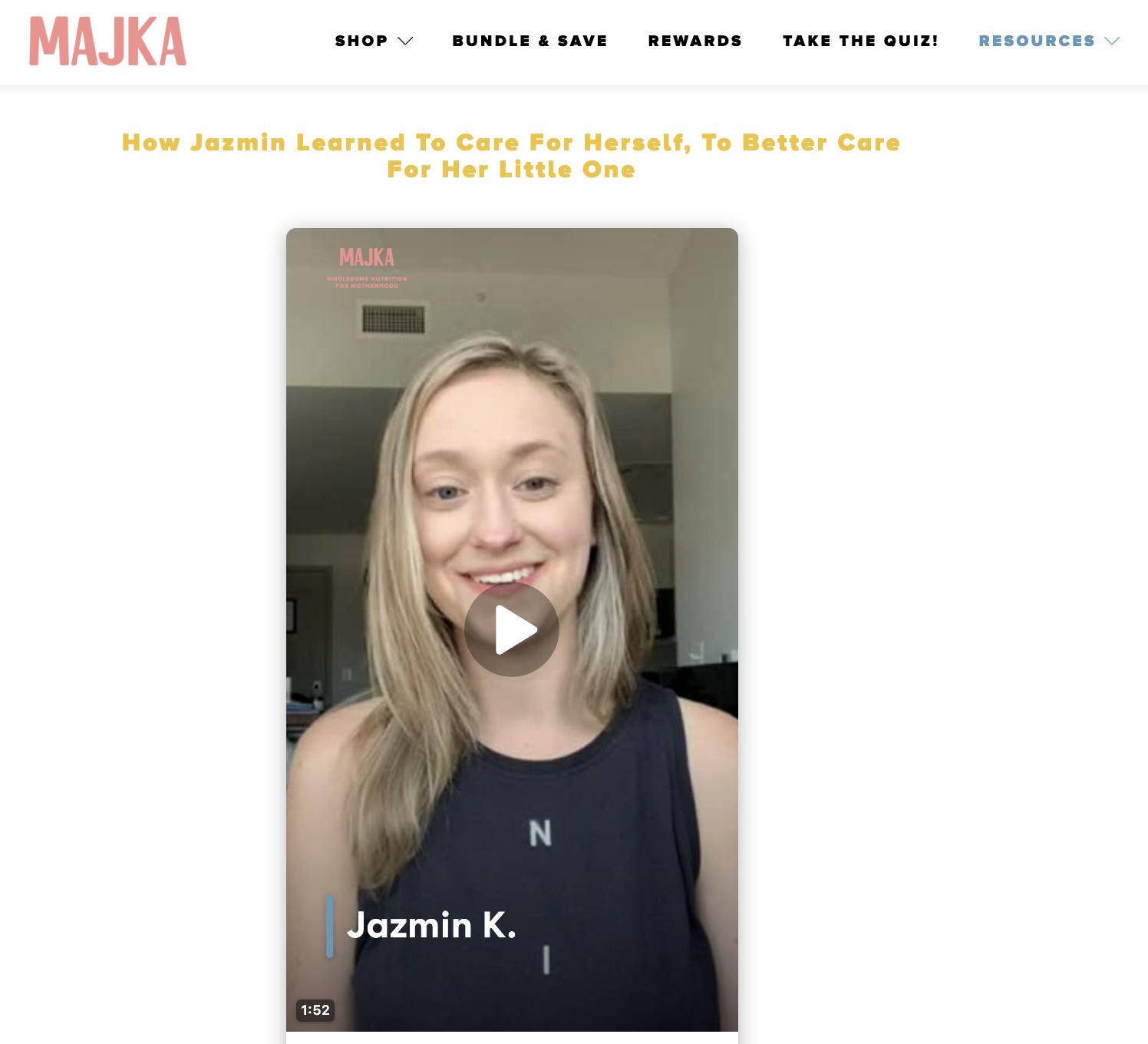
4. Draw Awesome: Social Proof Website Gallery
Draw Awesome, an online art tutorial platform, uses a customer gallery as the centerpiece of their website. This story collection, which they can also link to from the course pages, helps convert more of their website visitors by showing how rewarding their process can be.
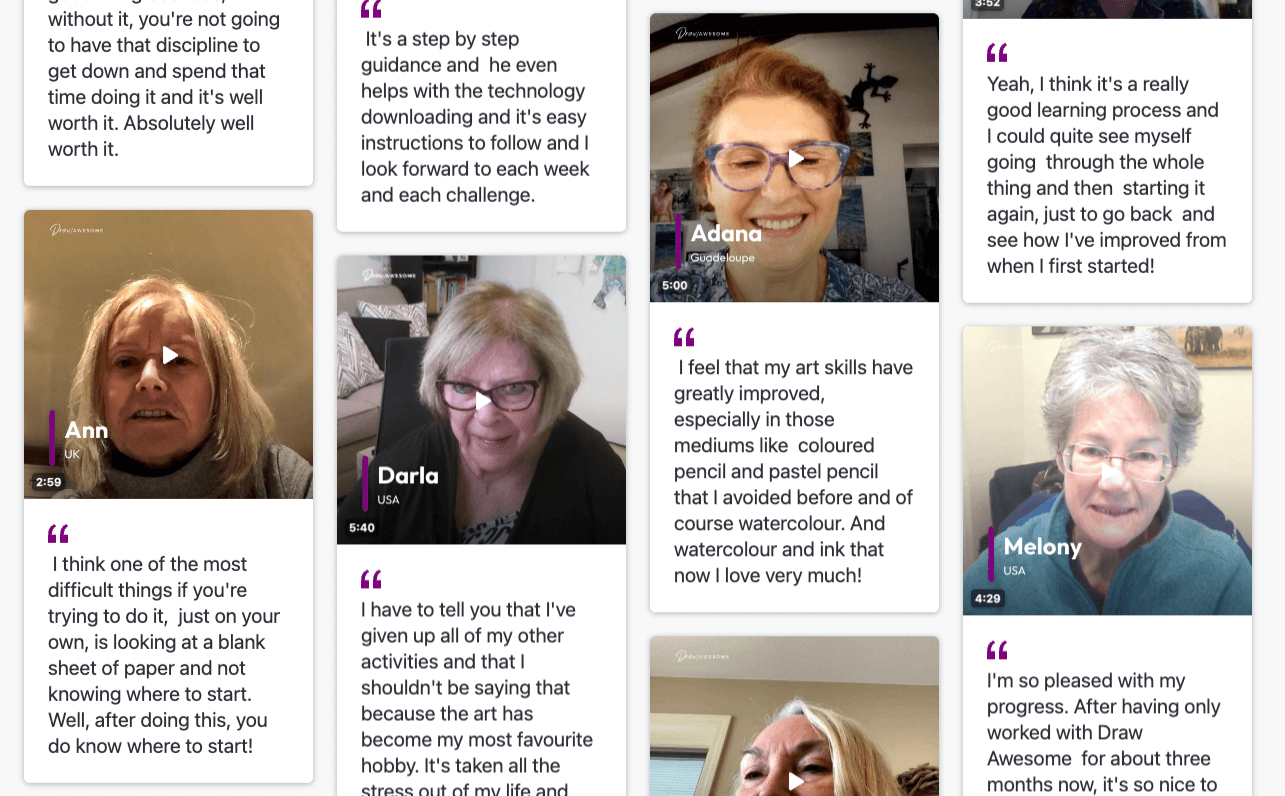
This “Wall of Love” gallery layout is particularly effective because it turns a high number of happy, relatable customers into promoters. The gallery is designed to be scrolled, so the visitor leaves with the knowledge that they’d be joining hundreds of other students from all over the world if they signed up for this service—as well as an impression of the unique highlights each speaker identifies.
5. The ACCP: Customer-Led Event Marketing
In this video from the American College for Clinical Pharmacology, a conference attendee (associate professor Otito Iwuchukwi) talks about her passion for advocacy in her industry and praises the inclusivity and diversity of the event.
This customer-focused video helps the ACCP reach out to pharmacists who might need a nudge to attend or access event resources online. The testimonial convinces them that the meeting will benefit them in their careers, and then points them toward the best place to find more information and sign up.
6. Case Studies and Client Testimonials for B2B Marketing
A case study is also a fantastic place to use UGC from your high-profile clients. Especially if you work in B2B marketing or SaaS, case studies can be a natural way to showcase the voices of your users, explain your product in clear terms, and add credibility to the other success metrics you show on your website.
The Digital Edge marketing agency supplements long-form, written case studies with video interviews. For example, after their partnership with the Palm Springs Convention Center, they interviewed their main contact to put a face to the data and back up their claims with a compelling, relatable story.
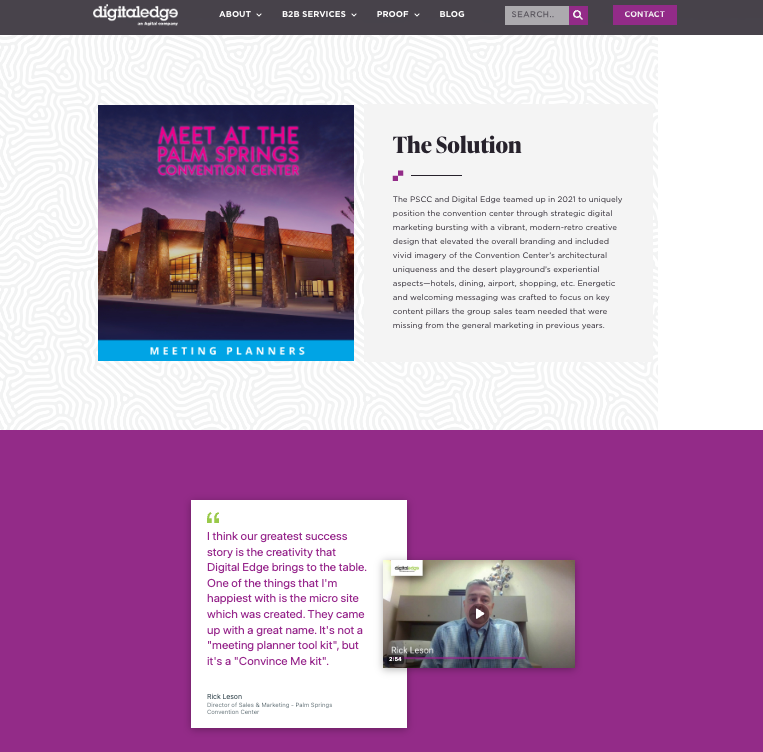
It’s worth noting that later on in this case study, Digital Edge pairs the client video with some written employee testimonials, emphasizing that the partnership was successful for everyone involved.
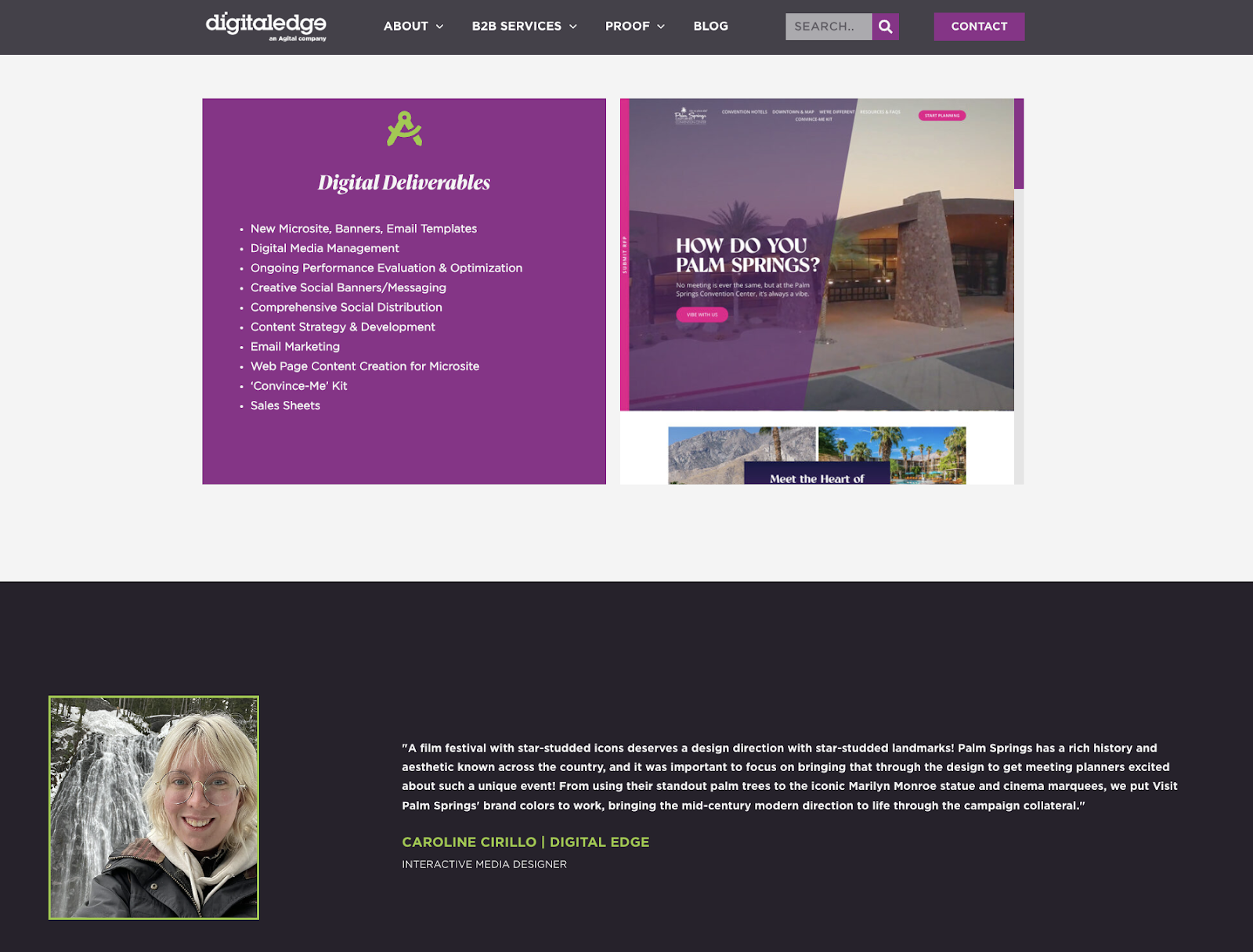
7. Fingermark: Recruitment Marketing Focused on the Needs of the Candidate
So far, we’ve focussed on customer-led marketing. Before we move on to the next section of the guide, it’s worth pointing out that you can also give people the information they need by turning the camera to your employees.
Fingermark, an AI and computer vision company, has seen great results from employee-generated content in their recruitment marketing strategy.
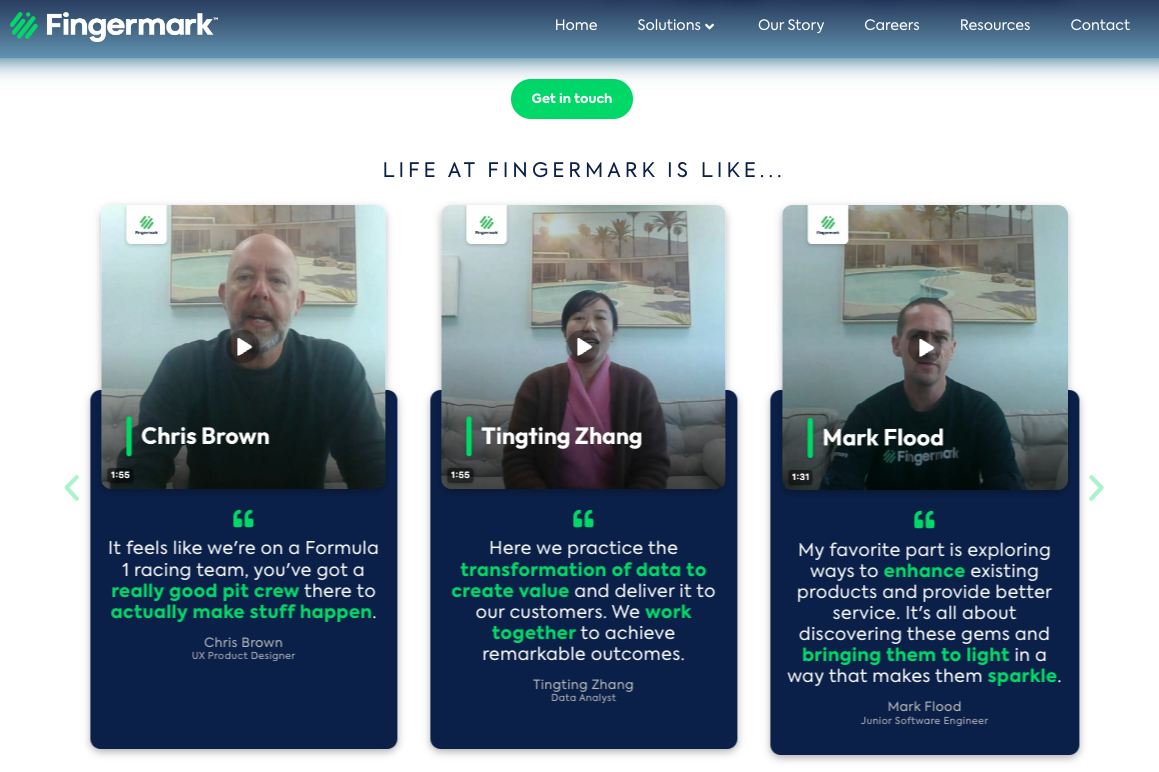
In this carousel of employee stories, the team explains what it’s like to work at the company. Just like customer-led product marketing, this makes a deeper connection with prospective job applicants and shows how Fingermark lives out its vision and values—which can be an important factor in someone’s decision about where to apply.
How to Use UGC Effectively: A Strategic Approach
Whatever your industry, it’s clear that the switch to a customer-led strategy can be a great choice for your business.
In this section of our guide, we’ll take you through the process step by step so you can plan effectively and measure the results.
Step 1: Identify Areas To Collect Customer Feedback
A full-on customer-led growth (CLG) strategy starts with creating a roadmap of the customer journey. However, if your main priority is to collect UGC, focus on identifying the customers whose stories you want to leverage.
Consider who your potential customers will relate to, who’s more likely to have the time and inclination to create content for you, and how you can invite them to get involved.
If you take a strategic approach to this first stage of the UGC process, you can create a strategy that sets up a stream of fresh content, helping you to aim for more sustainable growth with your marketing.
Top tip: Before you start inviting people to make UGC, refine your branding. You want a product with a clear selling point that people feel a strong connection to. This will make them far more likely to share it with their peers.
Step 2: Select Strategies to Gather UGC
Just as there are different types of UGC to consider, there are dozens of different ways to collect it.
For example, if you stay in touch with your long-term customers via a mailing list, consider putting out an open call for written or video reviews. If you’d rather hear from newer customers, inviting them to complete a survey or a feedback form might help you get more responses.
Top tip: Consider incentivizing customer feedback so you can collect a wider pool of insights and stories to draw from.
Step 3: Create a Framework for Your UGC
The best UGC feels organic and genuine, and potential customers will see straight through a leading question or a customer testimonial that feels more like an ad. Having said this, you’ll get more usable content and give your users a better experience if you make your expectations clear.
However you collect UGC, focus on writing high-quality prompts. Your interview questions should encourage your users to cover your selling points, while still describing the unique aspects of their personal experience. You should also consider the questions potential customers are researching when they come across your product, and aim for UGC that speaks to them.
Finally, bear the ideal length of your content in mind during this planning stage. For example, some short form video apps won’t support content longer than 90 seconds, and a multi-paragraph review could be off-putting if your goal is to add a catchy, scannable review to your website’s landing page.
Top tip: Check out this post for examples of effective testimonial questions: You Don’t Need 25 Questions for Your Next Customer Video Testimonial. Here’s Why.
Step 4: Consider Where to Publish UGC
The best customer-led content backs up the claims in the rest of your marketing strategy. Whereas product-led growth campaigns foreground features in their messaging, and sales-led campaigns aim to generate more revenue, UGC campaigns should show how you’ve already helped real people.
Many websites include a customer stories or testimonials page on their website—especially once they start to gather UGC at a higher rate. Others have had success mixing regular “customer spotlights” into their posting schedule, and still others choose to focus on one compelling customer news story that represents the challenges many people have faced.
Pro tip: Social selling has generally replaced word-of-mouth marketing. It can be helpful to consider where your potential customers meet and share their user experiences online, and make a plan to publish your content in those spaces.
Step 5: Act on the Feedback you Get From Customers to Build Trust
A cornerstone of the customer-led approach is acting on what your customers tell you. If you’re going to continue publishing customer stories, you need to show you take feedback onboard and—at least to some extent—shape your product according to your customer's needs and the changes in the market.
Top tip: Use a UGC software tool to gather, review, and analyze a greater volume of content from your customers and uncover actionable insights for your team.
Vocal Video: The Easiest Way to Collect and Publish Customer Videos Online
Of all the marketing resources you can gather for your company, customer testimonials are the most effective. This approach to customer-led marketing is an incredibly effective way to get feedback and create marketing content that appeals to a far-reaching audience. Vocal Video makes it easy for both your team and your satisfied customers to get started.
Our end-to-end video interview app helps you ask for, record, edit, and share user-generated content wherever you touch base with your customers.
Here’s how it works.
Build a Video Collector with Compelling Interview Prompts
Our video collector interfaces can be built from scratch or customized from an industry-specific template. For every template you build, you can include up to five questions to gather unique, detailed perspectives on someone’s customer experience and the benefits they’re seeing.
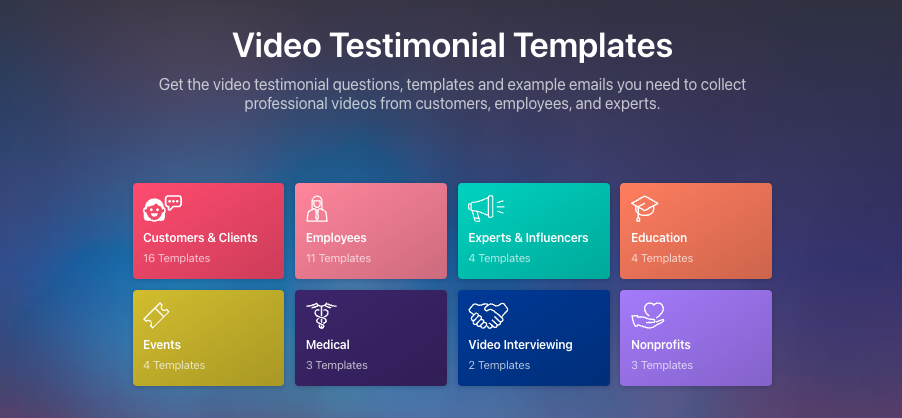
We also include features to customize your collector with your logo and company colors. This creates UGC that reflects each respondent’s personality, while still being instantly recognizable as part of your brand.
When you’re happy with how your collector looks, go to “Get Responses” in your dashboard. We’ll automatically generate a link to take respondents straight to the online collector. You can also use this screen to integrate Vocal Video with your CRM and send personalized links to users or influencers who have a great story to tell.
Find out more about the advantages of personalized links in the Vocal Video help center.
Share Your Collector With Satisfied Customers
The Vocal Video system makes it smooth and straightforward to ask your target audience for reviews. You can ask for reviews…
- On your website, by adding a permanent link to your video collector
- By text, sending the link by SMS or WhatsApp
- On social media, especially if you have a catchy concept to encourage more people to demonstrate your product or share their stories
- In-person, by displaying the link in-store or adding a QR code to your printed leaflets and marketing materials
- By email, in your follow-up communications or newsletters. We’ve even suggested a three-touch email sequence of pre-ask, invitation, and reminder messages to help you get more responses.
It’s incredibly easy for your customers to follow through and record their testimonial once they have the link. They can open a collector on their smart device, wherever and whenever they have time, with no onboarding, no apps to download, and no need to schedule a slot for a live recording session.
Get Ready-to-Use Content for Your Marketing Campaigns
Every time a customer records content, we’ll put together a ready-to-share video and send it to your Vocal Video library. This automatic editing process means that as soon as you get an email notification telling you there’s new content to view, it’s ready to share. We’ll also give you a full suite of intuitive drag-and-drop and slider tools to tweak or repurpose the video before you publish it online.
Automatic editing adds a host of features to help your videos to stand out and engage viewers online. You can see branding and design elements like company logos, dynamic transitions, and automatically generated subtitles in action in these videos from our users.
The videos in your library are also easy for your sales team to access and share (including via integrations with tools like Slack or Google Docs). With tools like filters, stars, and commenting, your team can effortlessly sort and discuss the videos to identify the ones with the most valuable customer data and choose the ones most likely to appeal to new customers.
Share Customer-Led Marketing Content With a Single Click
When you’re ready to share, click “Publish,” and we’ll set up a public Vocal Videos page to host your content—it only takes a few minutes. Once the page is ready, you can set it to be searchable and share the link, or get the word out through a range of other marketing channels.
For example…
- Seamlessly embed UCG videos on your website. Just grab the snippet of code we generate and paste it into a new HTML block of your site.
- Post your videos to social media. Sharing on Facebook, Twitter, or LinkedIn takes one click.
- Download the videos. This is the perfect way to build a customer-led growth strategy on YouTube or a UGC platform like TikTok or Instagram Reels.
As well as publishing single videos, Vocal Video helps you create and embed dynamic video galleries, which can be even more effective in showing the size of your customer base and the trust you’ve built around your brand.
Take a Customer-Led Approach to Your Marketing with Vocal Video
Since we founded Vocal Video, we’ve helped more than 20,000 customers leverage video in their marketing efforts, and we’ve proven how effective customer-led marketing strategies can be for business growth. Time and again, testimonials have played a vital role in the way customers discover new brands and develop the loyalty that increases customer lifetime value.
It’s easier to take a customer-led approach to your digital marketing when you have tools in place to standardize the way you gather, review, and publish UGC. With a tool like Vocal Video, you can set up a system that’s engaging and effective for your customers and your sales and marketing teams.
Vocal Video is a cost-effective, user-friendly tool for powering customer-led marketing campaigns. Sign up for your free account now.